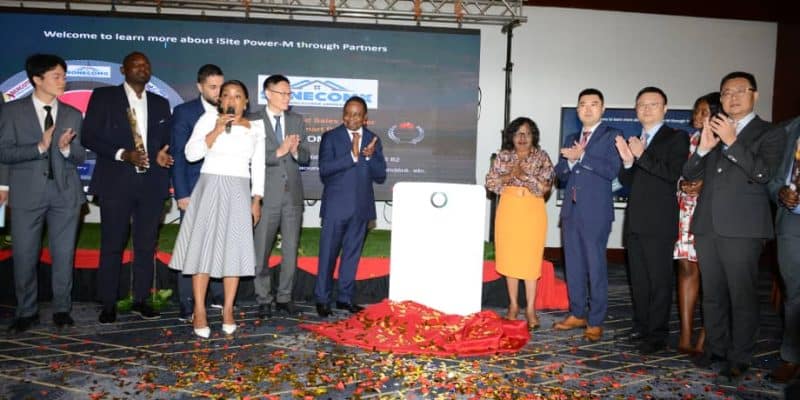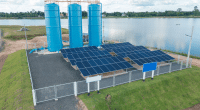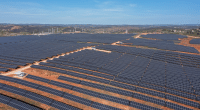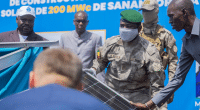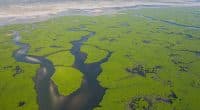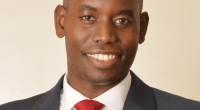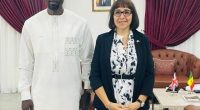Huawei will be marketing a new hybrid energy management system in Cameroon. The iSite Power-M solution was unveiled in the political capital Yaoundé on 3 May at the very first National Forum on Renewable Energies, co-organised by the Cameroonian Ministry of Water and Energy and Huawei.
To popularise and promote renewable energies in Cameroon. This was the aim of the first National Renewable Energy Forum, held on 3 May 2024 in Yaoundé, Cameroon. The event was co-organised by Cameroon’s Ministry of Water and Energy and Huawei. The digital giant took the opportunity to launch its intelligent and compact “iSite Power-M” hybrid power solution in Cameroon and throughout the Central African sub-region. This is a suitable alternative solution for the supply of electrical energy, powered mainly by solar energy, which could make up for the lack of access to electricity.
What iSite Power-M will change
In Cameroon, the overall rate of access to electricity in 2023 was estimated at 71% according to the Ministry of Water and Energy, i.e. 90% in urban areas and 40% in rural areas. “In terms of efficiency and cost reduction, our hybrid solar solution can save up to 70% on energy consumption through Cameroon’s major electricity operator, Eneo, unlike conventional systems,” says Huawei.
iSite Power-M also supports an alternative power source (AC). The power modules are available in three sizes (2.5k-5kW), (5kW-10kW), and (5kW-15kW), with built-in lithium batteries.
The electricity saved can be used to boost power supplies in rural areas, where fuel poverty is more acute, and provides a reliable and stable back-up power supply for homes, flats, offices (…) in urban areas. Such a solution will improve the rate of access to electricity, based on renewable energies. “Our country’s objective in the energy sector is to achieve a 100% electrification rate by 2035, i.e. 25% renewable energy compared with 5% at present, mainly solar energy”, said Cameroon’s Minister of Water and Energy Gaston Eloundou Essomba at the forum on renewable energy in Cameroon, which he chaired together with several other members of the government, including the Minister of Posts and Telecommunications, Minette Libon Li Likeng, and the Minister of Secondary Education, Nalova Lyonga. The Cameroonian government also plans to reduce its greenhouse gas (GHG) emissions by 32% by the same deadline.
Read Also – Renewable energy: provisional tax exemption for equipment in Cameroon
For Gaston Eloundou Essomba, the forum also served to demonstrate the importance of digitisation, which, far from being limited to the development of ICTs, is also focused on the transformation of green energies to produce electricity. Minister Gaston Eloundou Essomba pointed out that Huawei is also supporting the Cameroonian government in a project to electrify 1,000 localities in the country with solar photovoltaic systems. The first two phases have been completed, with 356 localities benefiting, representing 49,000 families (3 million inhabitants). The third phase, which will electrify a further 200 localities, started at the beginning of 2023.
The challenges ahead
To achieve the target of 25% renewable energy in its electricity mix by 2035, Cameroon is implementing several other projects, including the 39 MWp Maroua and Guider solar power plants, inaugurated in September 2023. For the record, this Central African country has an installed capacity of 1.75 GW generated from hydroelectric and thermal power plants that are highly polluting and costly to operate and maintain.
While the inventory and the projects underway have shown that the issue of energy transition is being taken into account in Cameroon, particularly through presentations and analyses, there are still challenges to be met. These include financing start-ups and small and medium-sized enterprises (SMEs) operating in the energy sector. The second challenge is training. Environmental awareness, which is the third challenge, could evolve and lead to the synergy of actions described and hoped for by the government of Cameroon. Taking these factors into account could accelerate the deployment of the renewable energies needed for socio-economic development in a country with a population of around 29 million.
Inès Magoum

